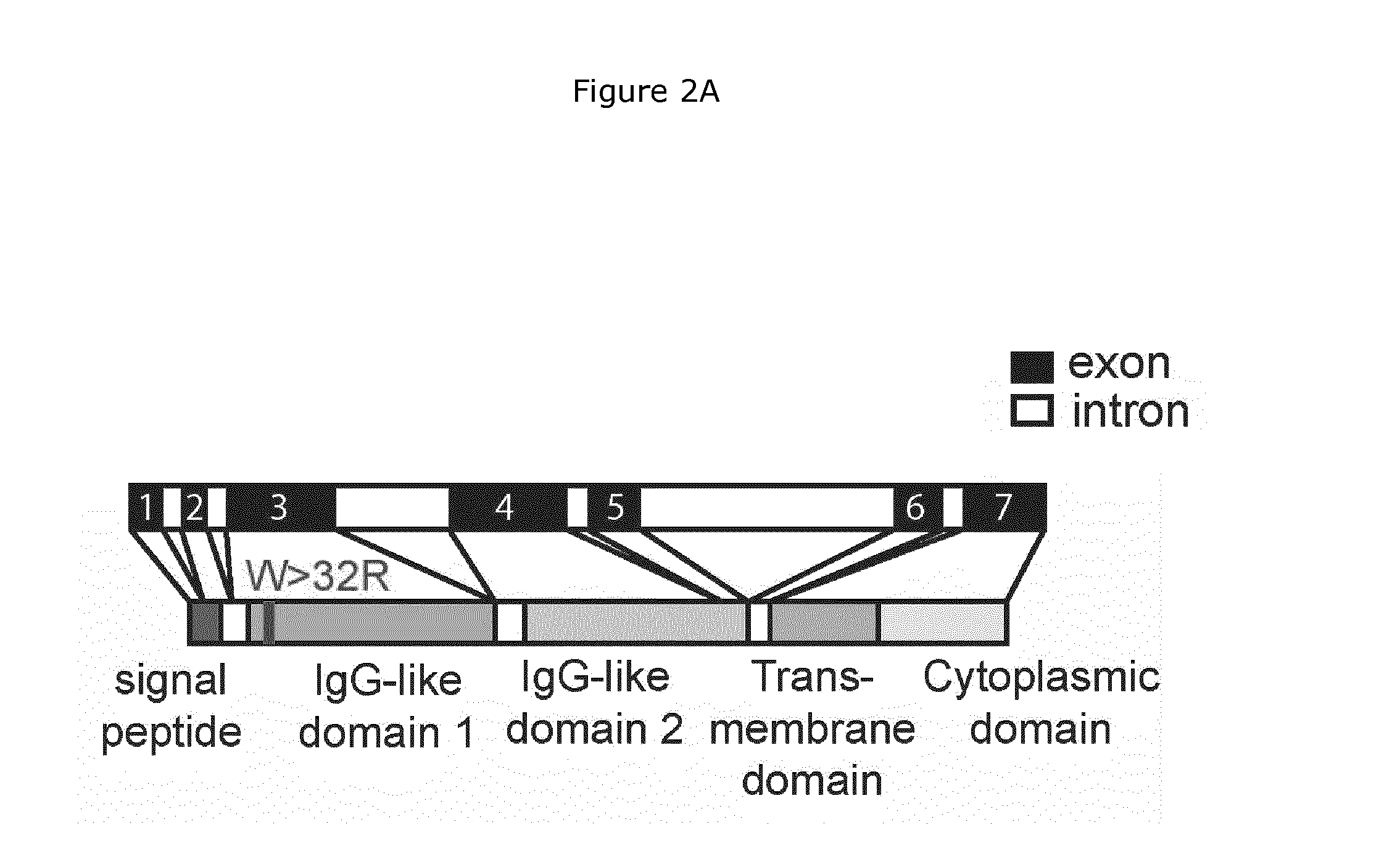Nkp46-mediated nk cell tuning
a nk cell and nk cell technology, applied in the field of nkp46mediated nk cell tuning, can solve the problems that the activating receptor has not been extensively exploited as a target for pharmaceutical modulation, and achieve the effect of enhancing nk cell-mediated activity and increasing resistance to mouse cytomegalovirus infection
- Summary
- Abstract
- Description
- Claims
- Application Information
AI Technical Summary
Benefits of technology
Problems solved by technology
Method used
Image
Examples
example 1
NKp46 Blockade Leads to Hyper-Reactive NK Cells and Diminished T Cell Responses
Materials and Methods
[0253]1. Mice and ENU Mutagenesis
[0254]ENU-mutagenesis was performed on a C57BL / 6J (Charles River) background as previously described (33). C57BL / 6J CD45.1 were purchased from Charles River. C57BL / 6J, Noé and huNKp46 Tg (15) littermates and NKDTR / eGFP mice (15) were bred and maintained under specific pathogen-free (SPF) conditions. Experiments were conducted in accordance with institutional guidelines for animal care and use.
[0255]2. MCMV Infection and Viral Titration
[0256]To study mouse resistance, mice were treated or not with 100 μg of anti-NK1.1 mAB (PK136) and infected intraperitoneally the day after with 1,600 to 7,500 PFU per gram of body weight of MCMV K181 strain. To study T cell responses, mice were infected with 1,600 PFU per gram of body. Measurement of viral titer in spleens and livers was performed after serial dilutions of organ homogenates in DMEM, 3% FCS that were inc...
example 2
Identification of Blocking NKp46 Antibodies
[0306]Anti-NKp46 antibodies were tested for their ability to inhibit NKp46 (inhibit NKp46 activity, signaling and / or ligand binding) using a reporter systems to evaluate whether candidate antibodies block NKp46-ligand induced NK cell lysis of a target cell. The reporter system used the IL-2-producing DO11.10 mouse T cell hybridoma expressing a chimeric receptor formed by either NKp46 or NKp30 extracellular domain fused to CD3ζ (DOMSP46 and DOMSP30 cells, respectively) as described in Schleinitz et al., (2008) Arthritis Rheum. 58: 3216-3223).
Materials and Methods
[0307]DOMSP30 and DOMSP46 reporter cell lines were generated by transduction of the DO.11.10 T cell hybridoma with retroviral particles encoding a chimeric protein in which the intracytoplasmic domain of mouse CD3ζ was fused either to the extracellular portion of NKp30 (DOMSP30) or NKp46 (DOMSP46). Engagement of these chimeric proteins at the cell surface triggers IL-2 secretion. DOM...
example 3
Extended Receptor Saturation is Required In Vivo with Blocking NKp46 Antibodies
[0310]Our findings suggested that NKp46 blockade could be harnessed, to enhance NK cell effector functions, as a novel immunotherapeutic strategy. We thus evaluated whether we could modify the responsiveness of NK cells by injecting anti-NKp46 mAb, at steady state, in WT mice (FIG. 17A). Short treatments lasting 24 to 72 hours, were sufficient to saturate NKp46 receptors (FIGS. 18A, B, D and E), but did not increase the reactivity of NK cells in response to YAC-1 tumor targets (FIGS. 18C and F). By contrast, in vivo blockade of NKp46 by the mAb for 13 days was sufficient to enhance NK cell responsiveness (FIG. 17B; *P=0.03 and **P=0.0081). Our results reveal the role of the conserved activating NK cell receptor NKp46 in NK cell function. They also pave the way for the counterintuitive use of blocking anti-NKp46 mAbs, to boost NK cell activity, as a novel immunostimulation strategy for the treatment of pat...
PUM
| Property | Measurement | Unit |
|---|---|---|
| pH | aaaaa | aaaaa |
| concentration | aaaaa | aaaaa |
| time | aaaaa | aaaaa |
Abstract
Description
Claims
Application Information
 Login to View More
Login to View More - R&D
- Intellectual Property
- Life Sciences
- Materials
- Tech Scout
- Unparalleled Data Quality
- Higher Quality Content
- 60% Fewer Hallucinations
Browse by: Latest US Patents, China's latest patents, Technical Efficacy Thesaurus, Application Domain, Technology Topic, Popular Technical Reports.
© 2025 PatSnap. All rights reserved.Legal|Privacy policy|Modern Slavery Act Transparency Statement|Sitemap|About US| Contact US: help@patsnap.com



